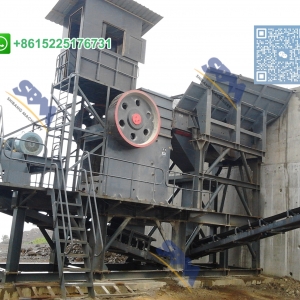Pay-Per-Click (PPC) advertising has been a cornerstone of digital marketing for many years. With the rise of affiliate marketing, combining PPC strategies with affiliate partnerships has become an increasingly popular way to drive sales, generate revenue, and scale businesses.
As we move into 2024, it's essential for both PPC advertisers and affiliate marketers to stay ahead of the curve and leverage emerging trends to maximize their earnings and grow their business.In this blog, we’ll explore the top PPC affiliate marketing trends you should keep an eye on in 2024.

What is PPC Affiliate Marketing?
Before diving into the trends, let’s quickly define what PPC affiliate marketing is. It’s a performance-based advertising model where affiliates earn commissions by driving targeted traffic to advertisers' landing pages or websites. The affiliate gets paid each time someone clicks on an ad (or even takes a specific action like making a purchase or signing up).
In PPC affiliate marketing, advertisers set up ads (on platforms like Google Ads, Facebook, or Bing) to promote their products or services. Affiliates then promote these ads through their marketing efforts, typically using paid search ads or other PPC strategies, in return for a commission for each click or conversion.
Top PPC Affiliate Marketing Trends to Watch in 2024
Increased Focus on AI and Automation
As artificial intelligence (AI) continues to evolve, it’s becoming an essential tool in the PPC affiliate marketing space. The use of AI-powered tools for automation is growing, helping marketers make more data-driven decisions and optimize their campaigns more efficiently.
How AI is Changing PPC Affiliate Marketing:
- Ad Copy Optimization: AI can help generate highly effective ad copy based on real-time data, improving the chances of getting clicks and conversions.
- Bid Management: AI tools can automatically adjust bids based on conversion probability, ensuring affiliates get the best return on investment.
- Targeting Precision: AI allows for hyper-targeting by analyzing vast amounts of data, such as browsing habits and demographics, to ensure the right ads are shown to the right audience.
As AI becomes more sophisticated, PPC affiliate marketers will be able to manage campaigns more efficiently, cut down on manual work, and increase profitability.
Growing Popularity of Video PPC Ads
Video content has become one of the most powerful tools in digital marketing. Platforms like YouTube, TikTok, and Instagram have seen massive growth in video consumption, and PPC affiliate marketers are increasingly leveraging video ads to capture audience attention.
Why Video Ads Matter in 2024:
- Higher Engagement: Video ads tend to capture the audience’s attention better than static text or image ads. This is particularly true on platforms like YouTube, where video is the primary form of content.
- Better ROI: Many studies suggest that video ads lead to higher conversion rates. For PPC affiliate marketing, this means affiliates could see better returns on their investment when incorporating video into their campaigns.
- Appeal to Younger Audiences: Younger generations, particularly Gen Z, are more likely to engage with video content than traditional display ads. This makes video PPC campaigns ideal for targeting a younger demographic.
Video ads allow affiliates to showcase products or services in action, creating a more persuasive and engaging experience for potential customers.
Shift Toward Multi-Platform Campaigns
Gone are the days of focusing on just one platform for PPC campaigns. In 2024-25, the trend is moving toward multi-platform advertising strategies that allow affiliates to reach a broader audience across different channels.
Benefits of Multi-Platform PPC Affiliate Marketing:
- Broader Reach: Running ads across Google, Facebook, Instagram, and even TikTok allows you to tap into different audience segments.
- Cross-Channel Optimization: Multi-platform campaigns give you the opportunity to test different creatives, ad copy, and targeting strategies to see what works best. If one platform underperforms, you can shift your focus or reallocate your budget.
- Increased Brand Visibility: Being present on multiple platforms helps improve brand recognition and keeps your ads in front of potential customers across various touchpoints.
As user behavior continues to evolve, PPC affiliate marketers should ensure they are present on the platforms where their target audience spends their time.
PPC Affiliate Networks Will Play a Bigger Role
As affiliate marketing grows, PPC affiliate networks are becoming more essential to the process. These networks connect affiliates with advertisers who are looking to promote their products through paid campaigns. In 2024, these networks will evolve and offer more tools and resources for both advertisers and affiliates.
Why PPC Affiliate Networks Are Key in 2024:
- Access to More Advertisers: Networks provide affiliates with access to a variety of programs, offering multiple opportunities to choose from. This helps affiliates scale their operations without having to negotiate individual deals.
- Enhanced Tracking and Analytics: Modern affiliate networks offer advanced tracking capabilities, allowing affiliates to track the performance of each ad in real-time. This data is crucial for optimizing campaigns and boosting profitability.
- Better Compliance: Networks help ensure that both advertisers and affiliates follow industry best practices and legal regulations, providing peace of mind when working with new partners.
As the demand for paid traffic continues to rise, PPC affiliate networks will become even more important for both affiliates and advertisers looking for streamlined solutions to manage their campaigns.
Mobile Optimization Is Non-Negotiable
Mobile advertising is already a significant part of PPC campaigns, but in 2024, it’s more critical than ever to ensure your ads are optimized for mobile users. With mobile device usage continuing to rise globally, affiliates need to design campaigns that are mobile-first.
Optimizing PPC Ads for Mobile Devices:
- Responsive Design: Ensure your landing pages and ads adapt seamlessly to different screen sizes. Mobile users have limited time and attention, so you must make it easy for them to engage with your content.
- Faster Load Times: Mobile users expect fast-loading pages. Slow pages can increase bounce rates and lead to lost sales, so optimizing load times should be a priority.
- Call-to-Action (CTA): Make sure your CTA buttons are easy to click on mobile devices, especially for those on smaller screens.
Native Ads Are Gaining Traction
Native advertising, which blends seamlessly with the content on the platform, is becoming an increasingly popular choice for PPC affiliate marketers. Unlike traditional display ads, native ads match the form and function of the platform, providing a less intrusive experience for users.
Why Native Ads Matter:
- Higher Engagement: Since native ads are designed to blend with the user experience, they tend to get more engagement compared to traditional display ads.
- Better User Experience: Native ads do not disrupt the browsing experience, making them more likely to be clicked and converted.
- Brand Trust: Because they feel more organic and less “salesy,” native ads can help build trust with the audience, leading to better results.
In 2024, more PPC affiliates will incorporate native ads into their campaigns as a way to improve ad performance while providing a better experience for users.
Conclusion
As we head into 2024, the landscape of PPC affiliate marketing is evolving rapidly. Staying ahead of these trends—whether it's embracing AI, incorporating video ads, or optimizing for mobile—is essential for success. By adapting to these changes and leveraging tools like PPC affiliate networks and native ads, affiliates can stay competitive and increase their profitability in the coming year.
FAQs About PPC Affiliate Marketing
What is the difference between PPC affiliate marketing and traditional affiliate marketing?
Ans: In traditional affiliate marketing, affiliates earn commissions based on sales or leads generated by organic traffic or referrals. In PPC affiliate marketing, affiliates pay for ads that drive traffic to their affiliate offers and earn money based on clicks or conversions, depending on the campaign structure.
Can I use Google Ads for PPC affiliate marketing?
Ans: Yes, you can use Google Ads for PPC affiliate marketing, but it’s essential to follow Google’s advertising policies. Google has specific rules regarding affiliate marketing, including restrictions on using certain ad copy and landing pages. Ensure you’re compliant with their guidelines to avoid penalties.
How do I optimize my PPC affiliate campaigns for better conversions?
Ans: To optimize your campaigns, focus on keyword targeting, creating compelling ad copy, optimizing your landing pages for higher conversions, and continuously testing different elements of your campaigns to find the best-performing combinations.
Are there any risks associated with PPC affiliate marketing?
Ans: Yes, the primary risk is overspending on ads without generating enough clicks or conversions to cover your costs. It’s crucial to monitor your campaigns closely, adjust bids, and optimize your landing pages to ensure you’re generating positive ROI.







